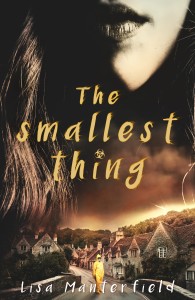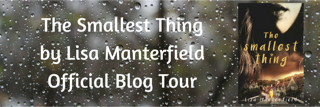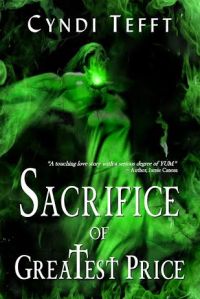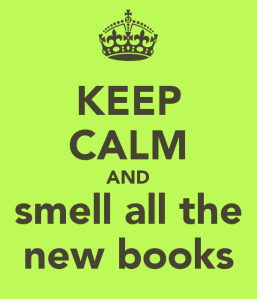One of the most exciting parts of living a creative life is finding kindred souls along the journey. I had the good fortune of meeting author Lisa Manterfield several years ago at the UCLA Writer’s Studio, and I quickly discovered I’d found a both a talented writer and cherished friend. Lisa’s writing is a marriage of science and emotion. An accomplished writer of both fiction and nonfiction, Lisa is unafraid to venture along the dark and curving paths of human experience (or climb onto high, precarious ledges). She invites her readers to the call of the wild while awakening a sense of timelessness and gravity, united with both the earth and beyond. Wherever Lisa takes her reader, you can be certain it’s new territory and you wouldn’t want to be there without her as a guide.
Lisa Manterfield is the award-winning author of A Strange Companion and I’m Taking My Eggs and Going Home: How One Woman Dared to Say No to Motherhood. Her work has appeared in The Saturday Evening Post, Los Angeles Times, and Psychology Today. Originally from northern England, she now lives in Southern California with her husband and over-indulged cat.
Her newest book releases today! I’m honored to be among the first to announce Lisa Manterfield’s latest novel, The Smallest Thing. In celebration, you can ENTER TO WIN a lovely swag box that includes a signed copy of The Smallest Thing and some fabulous gifts. We chatted about her experience researching and writing the story, and why her protagonists’ fathers tend to figure so prominently. I got the inside scoop on how published authors can find effective book marketing techniques that work for their readerships.
Ok, let’s begin! First, tell us what The Smallest Thing is about.

LM: When 17-year-old Emmott finds herself trapped in her tiny English village by a government-imposed quarantine, she must choose between saving herself at all costs or doing what’s right for the people she loves the most.
RL: What is the category and genre? Did you plan to write for this audience, or did the story dictate its own voice?
LM: The book is contemporary YA with a strong cross-over into Adult. I didn’t set out to write YA. I tend to write for a slightly older reader, but I needed to tell this story and my main character dictated the category. She was pretty adamant about telling it her way.
RL: This has been a very big year for you as an author! You’ve released not one, but two books, A Strange Companion and The Smallest Thing. How are they similar, and how are they different?
LM: They are both stories that demanded to be told and stuck with me until I wrote them. They’re both set in Northern England, in surroundings that are very familiar to me, and they both have young female protagonists who don’t always behave well. Both Kat and Em make some poor choices in their stories and don’t always treat people as well as they know they should, but in the process, they both learn a lot about who they really are. In both stories, there is a romance element, a struggle with family dynamics, and of course, death. Love, loss, and family always seem to crop up in my work.
Beyond that, my first novel, A Strange Companion, is a coming-of-age love story with paranormal elements. The Smallest Thing is a big mash-up of adventure, thriller, sci-fi, and romance. At their cores, though, they are still stories of young women figuring out who they are in the world.
RL: The Smallest Thing is loosely based on a true story about Eyam, “The Plague Village,” in Derbyshire, England. Can you tell us a little about the historical facts that inspired your novel?
LM: I grew up not far from Eyam and have always been fascinated by the story of self-sacrifice. The Great Plague was raging in London in 1665 and found its way to Eyam, some 150 miles away, when a local tailor brought in a bolt of cloth containing fleas (probably not unusual at that time.) When people in Eyam began succumbing to the plague, the villagers, led by the local vicar, made the decision to quarantine their village to prevent the spread of the disease to surrounding villages and to the thriving market town of Sheffield, my hometown. That decision saved untold thousands of lives, but cost the village dearly. All told, 260 of the 350 villagers lost their lives.
One of the personal stories that stayed with me is that of Emmott Syddall, a young woman whose fiancé lived outside the quarantine zone. It’s rumored they continued their courtship at a safe distance across the village boundary. Rowland Torre was reportedly one of the first to enter the village when the quarantine was lifted. Only then did he learn that Emmott had not survived. I took a great many liberties with the facts in my contemporary version, but the themes of love, self-sacrifice, and community are still what drives the story.
RL: You and I share the trait of writing young characters with dead or absent fathers. What is the significance of this in your stories?
LM: Ah yes. My dad died suddenly when I was 15. Thirty years later, I am still trying to work my way through that in my fiction. While neither of my novels is a fictionalized version of my personal story, there are elements of me in there. Like Kat, I was not prepared for the loss of my dad and, also like Kat, it took me a long time to work through my grief and move on. I suppose with Em, I was exploring what it might have been like to try to break away from my dad’s expectations for me, and be my own person. I imagine it would have been just as contentious as Em’s battle for independence, but hopefully not in such a terrible environment.
RL: Your protagonist Emmott is separated from her boyfriend when her village is quarantined. Under the same circumstances, how do you think you’d fare if your wonderful husband Mr. Fab and your devoted kitty Felicity were across Cucklett Delf?
LM: Astute readers will notice that there are no pets in the village. I made a deliberate choice to exclude them. I had no trouble writing terrible deaths for people, but I couldn’t bring myself to do it to the pets.
But, as you’re forcing me to imagine this scenario, I think I would be very grateful that Felicity and Mr. Fab were out of harm’s way. And then I would get down to the business of self-preservation. I’d like to think that I would also be a good citizen and try to be helpful to those trapped with me. We never really know how we’ll respond in crisis until it happens. Generally, I’m pretty cool under pressure, but who knows how I’d act if my life were truly in danger.
RL: Your biweekly inspiring blog posts have attracted a wonderful community of newsletter subscribers. Do you have any book marketing advice for indie authors?
LM: There are mountains of really solid information out there from authors who are insanely successful and have more information than I could offer. The problem is, there is SO much information and much of it is conflicting. It can be completely overwhelming for a new author. So my advice would be to read voraciously, gather information from several sources, and then walk away and think about what kind of author you are and what exactly you want from your career. Then pick the tools that will support that, take a deep breath, and do something that feels right. It may take some trial and error to find your groove, but it will end up being a lot more effective than hurling yourself into someone else’s best practice only to find it’s a poor fit.
RL: Do you maintain complete control over your characters or do they ever take the proverbial wheel?
LM: I tend to let them run wild and free in the first draft. I have an idea of what I’d like to happen, but I try to stay open to possibilities. The “mysterious man in the HAZMAT suit” in this novel was not in my original idea. He came out of a writing prompt, but the second he appeared, I knew he had to stay. His creation dramatically changed the course of the novel for the better.
RL: Do you miss the company of your characters when you finish writing a book?
LM: It took me ten years to write my first novel, A Strange Companion, largely because I couldn’t let go and call the book finished. Perhaps one of the hardest skills to master is finding that sweet spot between revising a book until it’s as good as it can be and knowing you’ve reached a point that there’s nothing more you can do and that more twiddling will only make the book worse. At that point, it’s time to move on.
When I’m working on a book, I am in that world with those characters. I wake up thinking about them and I talk to other people, not about the book as a whole, but about the characters by name. Once a book is finally finished, though, I go through a brief period of mourning, and then I let it go. And I’m a fickle lover; I’m already deep in a relationship with a whole new set of characters.
RL: Thank you, Lisa! I look forward to meeting your new characters and continuing our travels together on the journey of writing. Best of luck, wherever your creativity takes you.
The Smallest Thing is available now! (non-affiliate links)
Enter to WIN
a lovely swag box that includes a signed copy of The Smallest Thing and some fabulous gifts!
Click HERE to enter.
More about the book…
The Smallest Thing
By Lisa Manterfield
 The very last thing 17-year-old Emmott Syddall wants is to turn out like her dad. She’s descended from ten generations who never left their dull English village, and there’s no way she’s going to waste a perfectly good life that way. She’s moving to London and she swears she is never coming back.
The very last thing 17-year-old Emmott Syddall wants is to turn out like her dad. She’s descended from ten generations who never left their dull English village, and there’s no way she’s going to waste a perfectly good life that way. She’s moving to London and she swears she is never coming back.
But when the unexplained deaths of her neighbors force the government to quarantine the village, Em learns what it truly means to be trapped. Now, she must choose. Will she pursue her desire for freedom, at all costs, or do what’s best for the people she loves: her dad, her best friend Deb, and, to her surprise, the mysterious man in the HAZMAT suit?
Inspired by the historical story of the plague village of Eyam, this contemporary tale of friendship, community, and impossible love weaves the horrors of recent news headlines with the intimate details of how it feels to become an adult—and fall in love—in the midst of tragedy.
ISBN: 978-0-9986969-2-8
Category: Upper Young Adult Fiction
Publication: July 18, 2017
Pages: 286
Size: 5.25 x 8.00 in.
Price: $15.95
Binding: Perfect Bound
Publisher: Steel Rose Press
Stay in touch with Lisa Manterfield!
http://www.LisaManterfield.com
Facebook: AuthorLisaManterfield
Instagram: @lmanterfield
Twitter: @lisamanterfield
Goodreads: LisaManterfield







